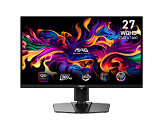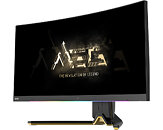MSI, the world's leading manufacturer of true gaming hardware, is proudly expanding the hardware possibilities for all gamers. While OLED panels have become the preferred choice for high-end gaming, the OLED burn-in issue has consistently been a major concern for all users. MSI is proud to introduce an exceptional solution that effectively addresses the dreaded OLED problem.
MSI's Pledge: 3-Year Warranty for OLED Monitors
To further enhance the longevity of your panels, we are proud to introduce MSI OLED CARE 2.0. This cutting-edge technology is designed to safeguard your OLED panels, providing enhanced protection and contributing to an extended lifespan. In a commitment to our valued gaming community, MSI guarantees a 3-year warranty on OLED panels. Our 3-year warranty extends beyond typical coverage—it includes protection against the burn-in issue. MSI understands the importance of providing comprehensive support, ensuring our users enjoy gaming without any concerns.



We believe these advancements highlight MSI's commitment to delivering top-notch gaming solutions and ensuring our users' utmost satisfaction. As we continue to innovate, MSI remains committed to providing unparalleled experiences for all gamers.
3-Year Warranty for OLED Model List
View at TechPowerUp Main Site | Source
MSI's Pledge: 3-Year Warranty for OLED Monitors
To further enhance the longevity of your panels, we are proud to introduce MSI OLED CARE 2.0. This cutting-edge technology is designed to safeguard your OLED panels, providing enhanced protection and contributing to an extended lifespan. In a commitment to our valued gaming community, MSI guarantees a 3-year warranty on OLED panels. Our 3-year warranty extends beyond typical coverage—it includes protection against the burn-in issue. MSI understands the importance of providing comprehensive support, ensuring our users enjoy gaming without any concerns.



We believe these advancements highlight MSI's commitment to delivering top-notch gaming solutions and ensuring our users' utmost satisfaction. As we continue to innovate, MSI remains committed to providing unparalleled experiences for all gamers.
3-Year Warranty for OLED Model List
- MAG 271QPX QD-OLED: https://www.msi.com/Monitor/MAG-271QPX-QD-OLED
- MAG 321UPX QD-OLED: https://www.msi.com/Monitor/MAG-321UPX-QD-OLED
- MAG 341CQP QD-OLED: https://www.msi.com/Monitor/MAG-341CQP-QD-OLED
- MPG 271QRX QD-OLED: https://www.msi.com/Monitor/MPG-271QRX-QD-OLED
- MPG 321URX QD-OLED: https://www.msi.com/Monitor/MPG-321URX-QD-OLED
- MPG 491CQP QD-OLED: https://www.msi.com/Monitor/MPG-491CQP-QD-OLED
- MEG 342C QD-OLED: https://www.msi.com/Monitor/MEG-342C-QD-OLED
View at TechPowerUp Main Site | Source




